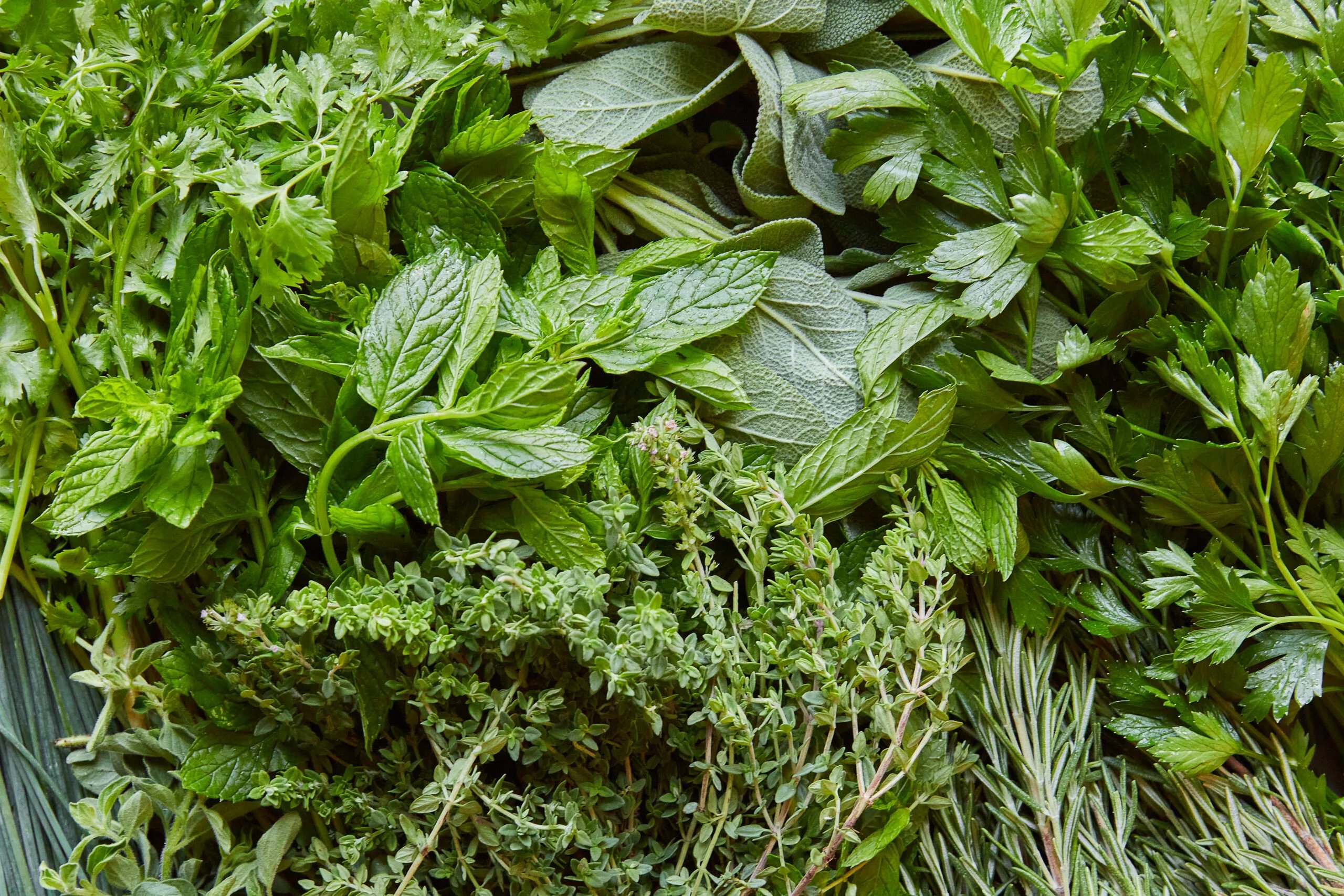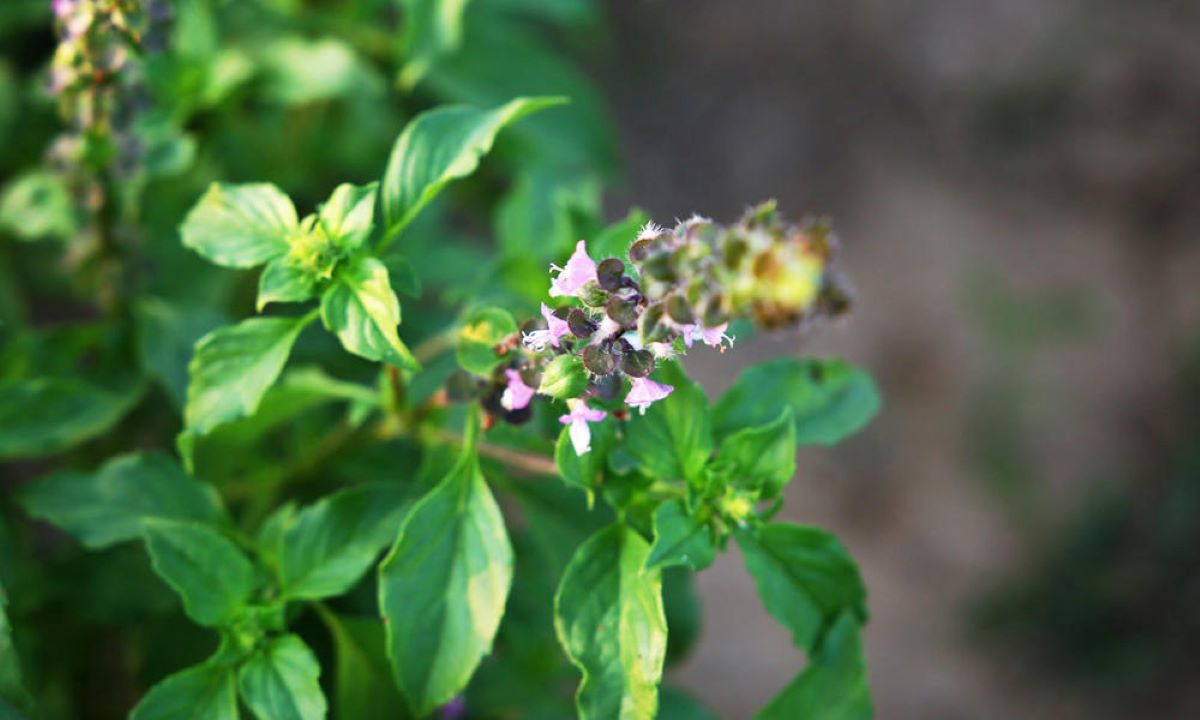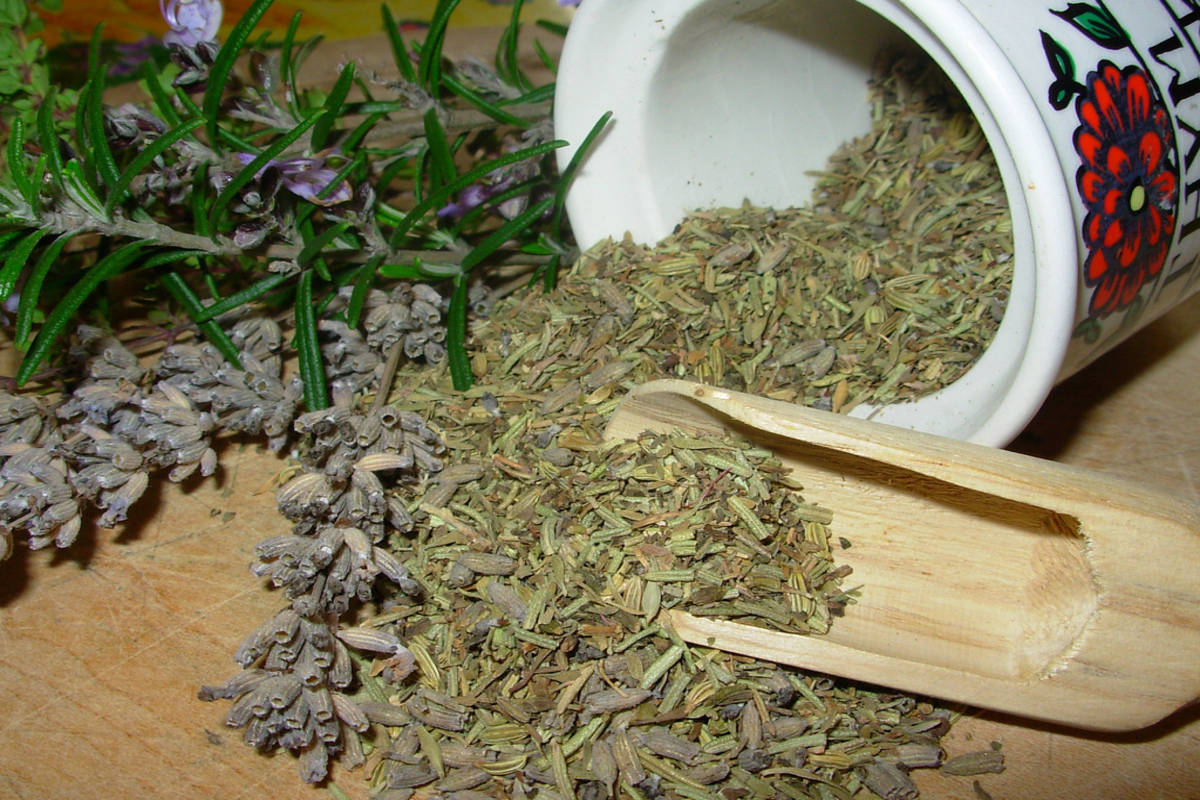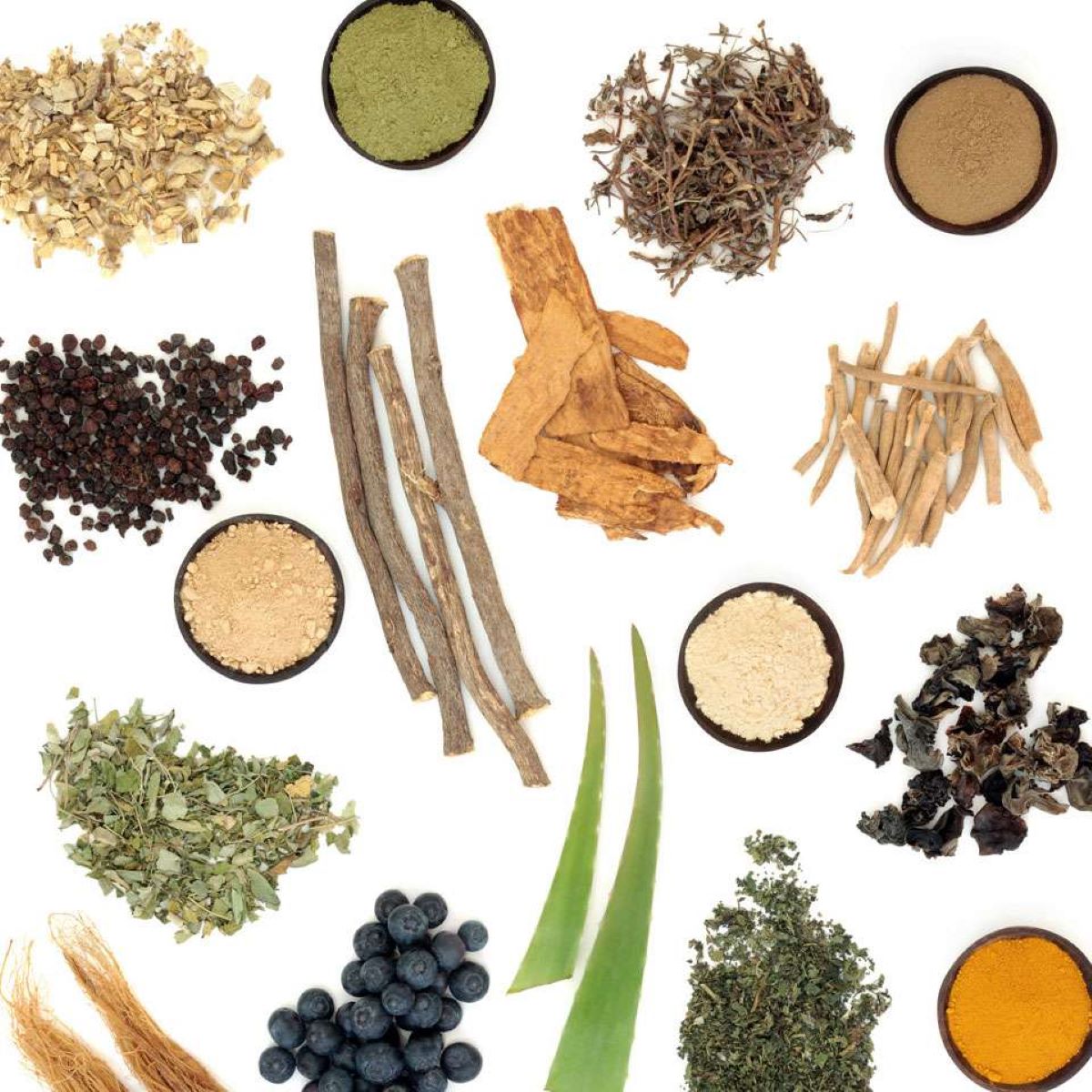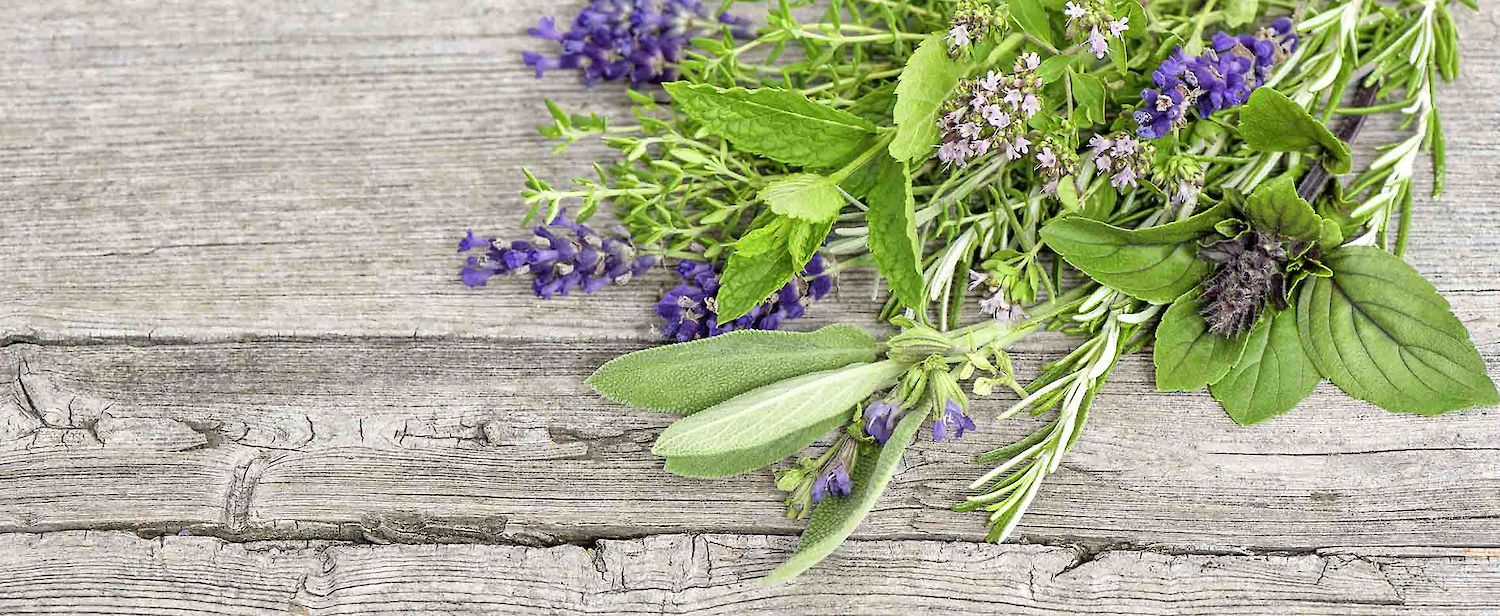Home>Gardening Basics>Getting Started>What Is The Study Of Herbs


Getting Started
What Is The Study Of Herbs
Modified: January 22, 2024
Discover the fascinating world of herbalism and learn about the study of herbs with our comprehensive guide. Get started on your herbal journey today!
(Many of the links in this article redirect to a specific reviewed product. Your purchase of these products through affiliate links helps to generate commission for Chicagolandgardening.com, at no extra cost. Learn more)
Table of Contents
Introduction
Herbs have been used for centuries as natural remedies and have played a significant role in human history. The study of herbs, also known as herbalism or herbology, is a fascinating field that focuses on the identification, classification, cultivation, and use of medicinal and aromatic plants.
Herbs have been valued for their therapeutic properties for thousands of years, dating back to ancient civilizations such as Egypt, China, and Greece. These early cultures recognized the healing potential of various plants and incorporated them into their medical practices. Today, the study of herbs continues to thrive, integrating traditional knowledge with modern scientific research.
Understanding the study of herbs encompasses not only the identification of different plants but also delves into their chemical composition, pharmacological effects, and potential interactions with the human body. Through this multidisciplinary approach, researchers aim to unlock the secrets of herbs and explore their potential in treating a wide range of ailments.
The study of herbs is no longer confined to ancient texts and traditional practices. In recent years, there has been a resurgence of interest in herbalism, partly driven by a growing appreciation for natural remedies and a desire to minimize reliance on synthetic drugs. As a result, the study of herbs has gained recognition as a viable field of study and profession.
In this article, we will explore the fascinating world of herbalism, delving into its history, the benefits of studying herbs, the methods used in the study, the importance of proper identification and classification, the challenges faced, and the ethical considerations involved. By the end, you will gain a deeper understanding of why the study of herbs is essential and how it can enhance our well-being.
Definition of Herbs
Herbs, in the context of herbalism, refer to plants that are valued for their medicinal, aromatic, or culinary properties. They are typically derived from the leaves, flowers, stems, or roots of various plant species. What distinguishes herbs from other plants is their specific properties and uses in traditional medicine and natural healing practices.
Herbs can be categorized into different groups based on their characteristics and functions. Medicinal herbs, for example, are used for their therapeutic properties and are often prescribed by herbalists to help treat specific ailments. Aromatic herbs, on the other hand, are valued for their pleasant fragrance and are commonly used in perfumes, aromatherapy, and culinary applications. Finally, culinary herbs are used to enhance the flavor of food and are an essential part of many cuisines around the world.
It is important to note that the term “herb” can also be used more broadly to refer to any plant or plant part used for medicinal purposes, including roots, bark, and seeds. However, in the study of herbs, the focus is primarily on the leaves, flowers, and other aerial parts of the plant.
Herbs can be used in various forms, including dried, fresh, or as extracts. They can be prepared as teas, tinctures, capsules, creams, or incorporated into topical applications. The choice of preparation method depends on the desired therapeutic effect and the specific properties of the herb.
Overall, herbs are an integral part of herbalism and offer a natural and holistic approach to health and well-being. Their diverse properties and applications make them a fascinating subject of study, attracting researchers, practitioners, and enthusiasts alike.
Historical Use of Herbs
The historical use of herbs dates back to ancient civilizations, where plants were esteemed for their medicinal, culinary, and spiritual properties. Across different cultures and regions, herbs played a vital role in traditional healing practices and were revered for their therapeutic effects.
Ancient Egyptians, for instance, utilized various herbs in their medical practices, as evidenced by papyrus texts dating back to 1550 BCE. Herbs such as aloe vera and garlic were used for their healing and antimicrobial properties. Egyptians also incorporated herbs into religious rituals and embalming processes.
In ancient China, the use of herbs was an integral part of Traditional Chinese Medicine (TCM) and played a crucial role in restoring balance and promoting overall well-being. Chinese herbal medicine relied on the knowledge of thousands of herbs, with each herb having specific properties and functions. Herbs like ginseng, ginger, and licorice were widely used for their therapeutic properties.
Greek and Roman civilizations also embraced the use of herbs for medicinal purposes. In Greece, the renowned physician Hippocrates emphasized the healing power of nature and advocated for the use of herbs in treating various ailments. The Greek physician Dioscorides compiled a comprehensive herbal text known as De Materia Medica, detailing the properties and uses of hundreds of plants.
Throughout the Middle Ages, herbal knowledge was preserved and expanded upon by Islamic scholars, who translated and built upon Greek, Roman, and Indian herbal texts. Herbal gardens were maintained in monasteries, and herbal knowledge was passed down through generations of monks and healers.
During the Renaissance period, herbalism continued to evolve. The invention of the printing press allowed for the dissemination of herbal knowledge, leading to the publication of herbals, which contained detailed descriptions and illustrations of plants. Notable herbalists of this time include John Gerard and Nicholas Culpeper.
The historical use of herbs paved the way for modern herbal medicine and contributed to the development of conventional medicine practices. While the scientific understanding of herbs has advanced significantly, many traditional herbal remedies and practices are still utilized today.
Understanding the historical use of herbs provides invaluable insights into their efficacy and helps inform current herbal research and applications.
Modern Study of Herbs
The modern study of herbs combines traditional knowledge with scientific research to gain a deeper understanding of their therapeutic potential and mechanisms of action. It encompasses various fields, including botany, pharmacology, phytochemistry, and clinical research.
One aspect of the modern study of herbs involves the identification and classification of plant species. Botanists play a crucial role in identifying and cataloging different herbs, ensuring accuracy in their identification and facilitating further research. This is done through the examination of plant structures, such as leaves, flowers, and stems, as well as genetic analysis.
Pharmacologists study the physiological effects of herbs on the human body. They investigate the interactions between bioactive compounds found in herbs and specific biological targets, such as receptors and enzymes. This research helps to understand how herbs exert their therapeutic effects and facilitates the development of evidence-based herbal medicines.
Phytochemists analyze the chemical composition of herbs to identify the active compounds responsible for their medicinal properties. They use techniques such as chromatography and spectroscopy to isolate and characterize these compounds. By studying the chemical profiles of herbs, researchers can determine their safety, efficacy, and potential interactions with other substances.
Clinical research involves conducting studies to evaluate the efficacy and safety of herbal remedies in humans. This may include randomized controlled trials, systematic reviews, and meta-analyses. Such research provides scientific evidence for the use of herbs in the prevention and treatment of various health conditions, ensuring that herbal medicine is grounded in solid scientific principles.
Moreover, advancements in technology have contributed to the modern study of herbs. High-performance liquid chromatography (HPLC) and mass spectrometry allow for more precise analysis of herbal extracts, helping to identify and quantify specific compounds. DNA barcoding techniques assist in the authentication and quality control of herbal products.
The modern study of herbs has also benefited from interdisciplinary collaborations. Researchers from different fields, such as medicine, pharmacology, and herbalism, work together to combine their expertise and perspectives. This collaborative approach helps to bridge the gap between traditional and modern knowledge, ensuring a comprehensive understanding of herbs.
Overall, the modern study of herbs has contributed to a deeper understanding of their therapeutic potential and has facilitated the integration of herbal medicine into conventional healthcare practices.
Benefits of Studying Herbs
The study of herbs offers numerous benefits, both for individuals and society as a whole. Whether you are an aspiring herbalist, a healthcare practitioner, or simply interested in natural remedies, here are some key advantages of studying herbs:
- Holistic Approach to Health: Herbalism emphasizes a holistic approach to health and wellness, considering not only the physical symptoms but also the underlying causes of imbalance. Studying herbs allows individuals to explore natural remedies that address the root causes of health issues, promoting overall well-being.
- Accessible and Affordable: Herbal remedies are often more accessible and affordable than conventional pharmaceuticals. Studying herbs empowers individuals to take control of their health by utilizing natural remedies that can be grown in gardens or sourced from local markets.
- Diverse Applications: The study of herbs unveils the diverse applications of different plants, ranging from culinary uses to medicinal properties. This knowledge allows for creative and personalized approaches to health and wellness, tailoring herbal remedies to specific needs and preferences.
- Supports Sustainable Practices: Herbalism encourages the sustainable cultivation and harvesting of medicinal plants. By studying herbs, individuals can learn about ethical harvesting techniques, cultivation practices, and the conservation of endangered plant species, helping to protect biodiversity and preserve traditional knowledge.
- Complementary to Conventional Medicine: Understanding herbs and their potential interactions with pharmaceutical drugs allows healthcare practitioners to incorporate herbal remedies into conventional treatment plans. This integrated approach can enhance patient outcomes and provide additional options for managing health conditions.
- Promotes Self-Care and Empowerment: Studying herbs empowers individuals to take an active role in their own health and well-being. By learning about different herbs, their properties, and how to prepare them, individuals can make informed choices and practice self-care through herbal remedies.
- Cultural and Historical Connection: The study of herbs connects individuals to their cultural heritage and the wisdom of past generations. Exploring traditional herbal remedies allows for a deeper appreciation of cultural practices and the preservation of ancestral knowledge.
- Continual Learning and Discovery: The world of herbs is vast and ever-evolving. Studying herbs provides a lifelong journey of learning and discovery, as new research emerges and traditional knowledge is combined with modern science. This constant learning process keeps the study of herbs engaging and exciting.
By studying herbs, individuals can reap these benefits and contribute to the growing body of knowledge in herbalism, ultimately promoting health and well-being for themselves and others.
Common Methods Used in the Study of Herbs
The study of herbs involves a range of methods and techniques aimed at understanding their properties, mechanisms of action, and potential uses. Here are some common methods used in the study of herbs:
- Botanical Identification: Botanists play a crucial role in the study of herbs by identifying and classifying different plant species. They examine various plant structures, such as leaves, flowers, and stems, and use tools like microscopes to identify key characteristics. This knowledge is fundamental in accurately identifying and cataloging herbs.
- Pharmacological Studies: Pharmacological studies investigate the effects of herbal extracts or compounds on biological systems. Researchers use in vitro and in vivo experiments to understand the bioactive components of herbs and their interactions with the human body. These studies help elucidate the therapeutic potential and mechanisms of action of herbs.
- Phytochemical Analysis: Phytochemists analyze the chemical composition of herbs to identify and quantify the active compounds responsible for their medicinal properties. Techniques such as chromatography and spectroscopy are used to isolate and characterize specific compounds. This analysis provides valuable information about the chemical profiles of herbs and their potential health benefits.
- Clinical Trials: Clinical trials evaluate the safety and efficacy of herbal medicines in humans. These studies involve randomized controlled trials, where participants are assigned to different treatment groups to assess the efficacy of herbs compared to a placebo or standard treatment. Clinical trials provide scientific evidence to support the use of herbs in various health conditions.
- Traditional Knowledge: The study of herbs incorporates traditional knowledge passed down through generations. Ethnobotanists and anthropologists work closely with traditional healers and indigenous communities to document and preserve their herbal knowledge. This collaborative approach helps bridge the gap between ancient traditions and scientific research.
- Quality Control and Standardization: The study of herbs involves quality control measures to ensure the safety and efficacy of herbal products. Techniques such as DNA barcoding and chemical analysis are used to authenticate herbs and detect adulteration. Standardization processes are also employed to ensure consistent potency and quality of herbal medicines.
- Preparation and Formulation: Herbalists study different techniques for preparing herbs, such as decoctions, infusions, tinctures, and poultices. They explore traditional and contemporary methods of extracting active compounds from plants to maximize their therapeutic effects. The study of formulation involves combining herbs synergistically for specific health purposes.
- Evidence-Based Research: The study of herbs embraces an evidence-based approach by integrating scientific research with traditional knowledge. Researchers critically evaluate existing literature, conduct systematic reviews, and meta-analyses to assess the overall efficacy and safety of herbal treatments.
These methods, among others, contribute to the comprehensive understanding of herbs and their potential applications in healthcare. By utilizing these approaches, researchers and herbalists can uncover the diverse properties and benefits of herbs, steering the field of herbalism forward.
Importance of Proper Identification and Classification of Herbs
Proper identification and classification of herbs are of paramount importance in the study of herbalism. Accurate identification ensures that the right plant species are used in herbal preparations and research, guaranteeing safety, efficacy, and consistency. Here are key reasons why proper identification and classification of herbs are essential:
- Safety and Avoidance of Toxicity: Different plant species can have vastly different chemical compositions and properties. Proper identification ensures that toxic plants or plant parts are not mistakenly used, preventing potential harm or adverse reactions. By accurately identifying herbs, herbalists and researchers can select the appropriate plants with known safety profiles.
- Effectiveness and Consistency in Treatment: Each herb has its own unique combination of active compounds, which contributes to its therapeutic effects. Improper identification may result in using the wrong herb, leading to ineffective treatment. Proper classification and identification ensure that the intended herb with the desired therapeutic properties is used consistently, enhancing treatment efficacy.
- Preservation of Traditional Knowledge: Traditional herbal knowledge is deeply rooted in cultural practices and passed down through generations. Proper identification and classification contribute to the preservation of this knowledge, ensuring that the correct plants are being used according to traditional practices. This helps to maintain the integrity of traditional remedies and traditional healing systems.
- Research and Scientific Validity: Proper identification and classification of herbs are essential for conducting accurate scientific research. Researchers need to use the correct plant species in studies to ensure reliable and reproducible results. By accurately identifying and classifying herbs, research findings can be properly attributed to specific plants, allowing for further validation and comparison of results.
- Ethical and Sustainable Harvesting: Proper identification helps prevent the overharvesting of endangered or protected plant species. By correctly identifying herbs, herbalists can ensure sustainable harvesting practices and advocate for the conservation of endangered plants. This promotes ethical and responsible sourcing of herbs, preserving biodiversity and ecosystems.
- Quality Control and Industry Standards: Proper identification is crucial for ensuring quality control in the herbal industry. Accurate identification guarantees that herbal products are formulated with the correct herbs and meet industry standards. This builds trust among consumers and facilitates the regulation and oversight of herbal products.
In summary, proper identification and classification of herbs are essential for the safe and effective use of herbs, the preservation of traditional knowledge, the validity of scientific research, and the ethical and sustainable practices in the herbal industry. By emphasizing the importance of accurate identification, herbalists and researchers can uphold standards of quality, safety, and integrity within the field of herbalism.
Challenges in the Study of Herbs
The study of herbs, while fascinating, is not without its challenges. Researchers, herbalists, and practitioners encounter various obstacles that can impede the progress and understanding of herbalism. Here are some common challenges in the study of herbs:
- Lack of Standardization: One of the primary challenges in herbalism is the lack of standardization in herbal preparations. The potency and composition of herbal products can vary significantly depending on factors such as plant sourcing, harvesting practices, and manufacturing methods. This makes it challenging to compare and reproduce research findings, affecting the reliability and consistency of herbal treatments.
- Limited Research Funding: Herbal research often struggles to secure sufficient funding compared to conventional pharmaceutical research. This lack of financial support hinders large-scale clinical trials, in-depth investigations, and the exploration of lesser-known herbs. Limited funding also restricts the expansion of knowledge in the field, making it difficult to explore the full potential of herbal medicine.
- Regulatory Frameworks: The regulatory frameworks surrounding herbal products can be complex and inconsistent across different regions. This lack of harmonization makes it challenging to ensure safety, quality, and appropriate labeling of herbal products. The varying regulations can also hinder the availability and accessibility of certain herbs, limiting research opportunities and hampering the advancement of herbalism.
- Limited Research on Herb Combinations: Herbal medicine often utilizes combinations of herbs to enhance therapeutic effects and synergistic interactions. However, limited research exists on the safety and efficacy of specific herb combinations. The complex nature of herbal formulas makes it challenging to evaluate their interactions and determine optimal dosages, hindering the ability to fully understand and utilize the potential of herb combinations in clinical applications.
- Herb-Drug Interactions: Some herbs can interact with conventional medications, influencing their efficacy or causing adverse effects. However, comprehensive knowledge of herb-drug interactions is still lacking. The complexity of these interactions and the limited research available make it challenging for healthcare professionals to provide accurate guidance on the concurrent use of herbs and pharmaceuticals.
- Limited Access to Traditional Knowledge: Traditional knowledge of herbs is often passed down through generations within specific cultural and indigenous communities. However, access to this knowledge can be limited or restricted, preventing a broader understanding and dissemination of valuable traditional practices. Engaging with and respecting traditional knowledge holders is vital to bridge this gap and preserve traditional herbal wisdom.
Despite these challenges, the study of herbs continues to evolve and gain recognition. Overcoming these obstacles requires collaborative efforts among researchers, policymakers, traditional knowledge holders, and healthcare professionals to foster innovation, funding, and regulatory frameworks that support the growth and development of herbalism.
Ethical Considerations in the Study of Herbs
The study of herbs presents several ethical considerations that need to be addressed to ensure the responsible and respectful practice of herbalism. These ethical considerations touch upon various aspects, including cultural appropriation, sustainability, intellectual property, and informed consent. Here are some key ethical considerations in the study of herbs:
- Cultural Appropriation: Herbal knowledge is often deeply rooted in specific cultures and indigenous traditions. It is essential to approach the study of herbs with cultural sensitivity, acknowledging and respecting the origins of traditional knowledge. Researchers and practitioners should engage in open dialogue with the communities from which the knowledge originates, seeking permission and guidance to ensure proper cultural representation and prevent exploitation.
- Sustainable Sourcing and Harvesting: The study of herbs must prioritize sustainability to protect endangered plant species and preserve biodiversity. Herbalists and researchers should consider the environmental impact of herbal sourcing and harvesting practices. By promoting sustainable cultivation, responsible wild harvesting, and the conservation of medicinal plant populations, ethical practices can be upheld to support the long-term availability of herbs for future generations.
- Intellectual Property and Traditional Knowledge: Traditional herbal knowledge is often held by specific communities and passed down through generations. Respecting intellectual property rights and acknowledging the contributions of traditional knowledge holders is essential. Researchers should ensure that traditional knowledge is appropriately credited and protected, and consent should be obtained from the concerned communities before utilizing this knowledge for research or commercial purposes.
- Informed Consent and Research Ethics: Conducting research involving human participants requires obtaining informed consent and adhering to ethical guidelines. This includes communicating potential risks and benefits of herbal interventions, maintaining participant confidentiality, and ensuring voluntary participation. Researchers should ensure that their studies are conducted with integrity and uphold the highest ethical standards.
- Transparent Labeling and Product Claims: The herbal industry should prioritize transparency and accuracy in labeling and product claims. This includes providing clear and truthful information about the contents, potency, and safety of herbal products. By ensuring honest claims and transparent labeling, consumers can make informed decisions and trust that the products they are using are safe and effective.
- Responsible Communication: Practitioners, researchers, and educators have a responsibility to communicate honestly and responsibly about herbs. They should provide accurate information about the benefits, risks, and limitations of herbs, avoiding exaggerated claims or giving false hope. Responsible communication helps to foster trust between practitioners and the public, promoting responsible herbal use.
By addressing these ethical considerations, the study of herbs can be conducted with integrity, respect, and social responsibility. By valuing cultural diversity, promoting sustainability, and upholding ethical principles, the field of herbalism can thrive while preserving the rich traditions and knowledge that herbs have to offer.
Conclusion
The study of herbs offers a deep and multifaceted exploration into the world of natural remedies and botanical medicine. From ancient civilizations to modern research, herbs have played a significant role in human history, offering therapeutic benefits and cultural connections. By understanding the study of herbs, one can appreciate the importance of proper identification, the historical use of herbs, the challenges faced, and the ethical considerations involved in the field.
The study of herbs encompasses a wide range of disciplines, including botany, pharmacology, phytochemistry, and clinical research. By utilizing methods such as botanical identification, pharmacological studies, and clinical trials, researchers can unravel the therapeutic potential and mechanisms of action of herbs, providing evidence-based knowledge for their safe and effective use.
There are numerous benefits to studying herbs, both for individuals and society. Herbalism offers a holistic approach to health, providing accessible and affordable remedies. The diverse applications of herbs, the support of sustainable practices, and the integration of herbal medicine into conventional healthcare contribute to the growing popularity of herbalism.
However, the study of herbs also faces challenges, including the lack of standardization, limited research funding, regulatory frameworks, and the need for deeper understanding of herb combinations and interactions. Ethical considerations, such as cultural appropriation, sustainability, intellectual property, and informed consent, need to be addressed to ensure responsible and respectful practice.
In conclusion, the study of herbs is a dynamic and evolving field that combines ancient wisdom with modern science. By embracing the benefits of herbs, understanding their historical use, and navigating the challenges and ethical considerations, we can continue to unlock the potential of herbs for the promotion of health, well-being, and the preservation of cultural diversity.

